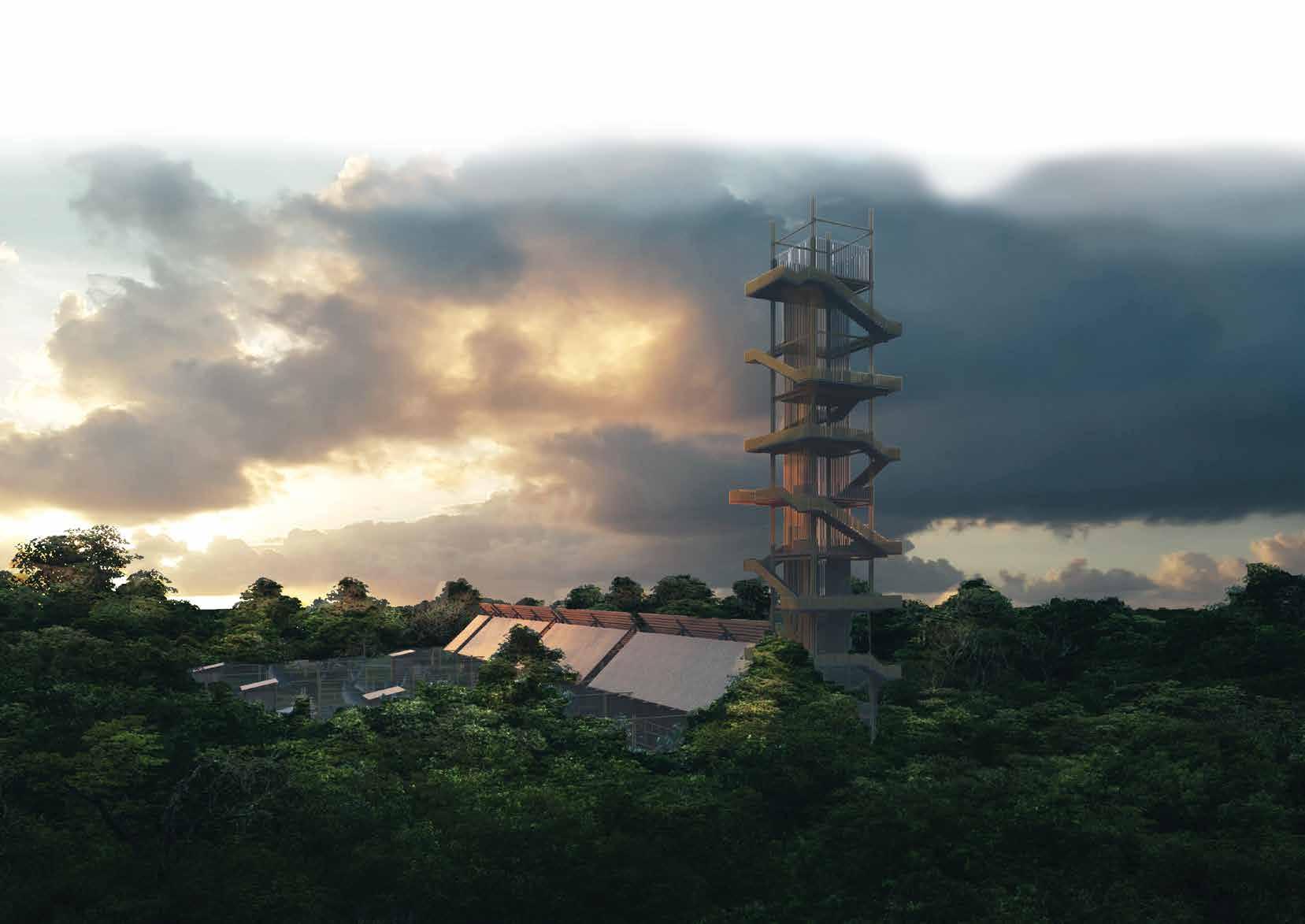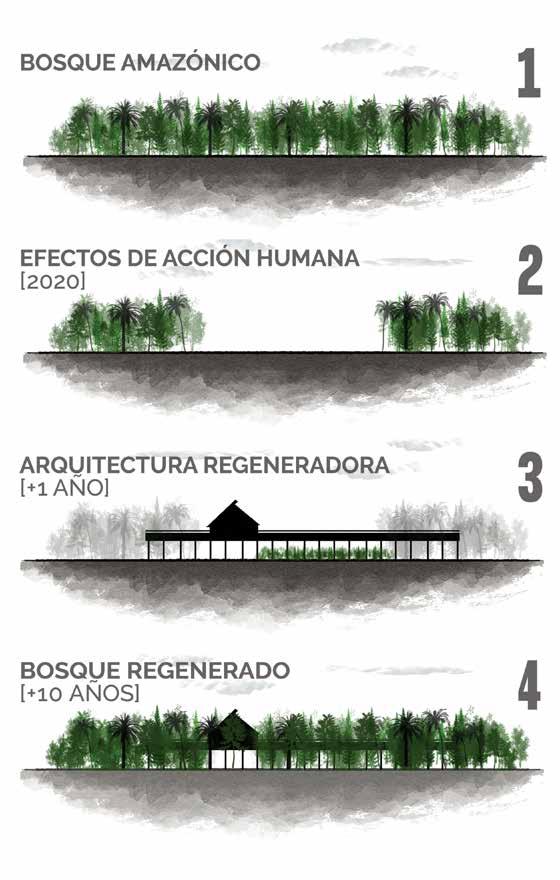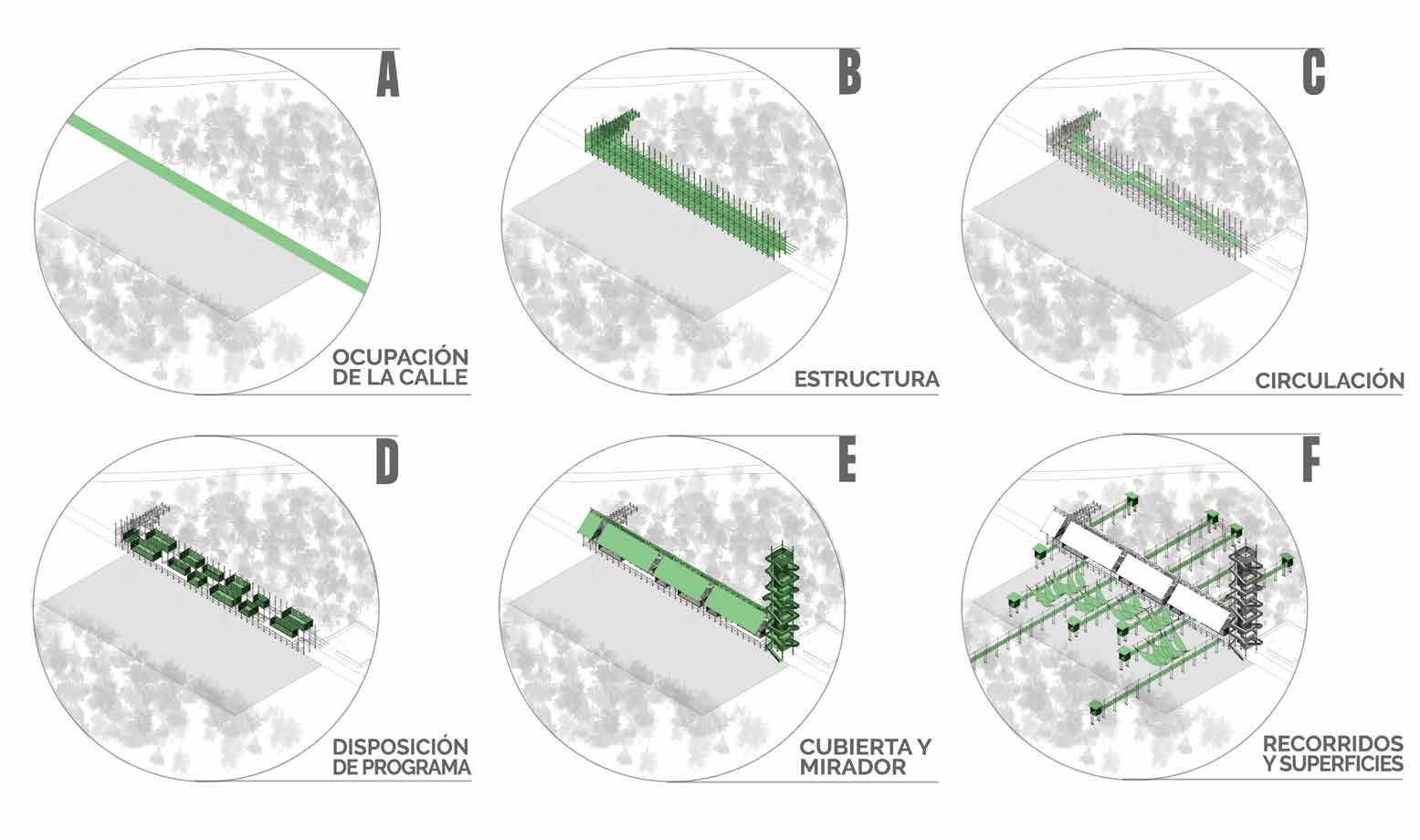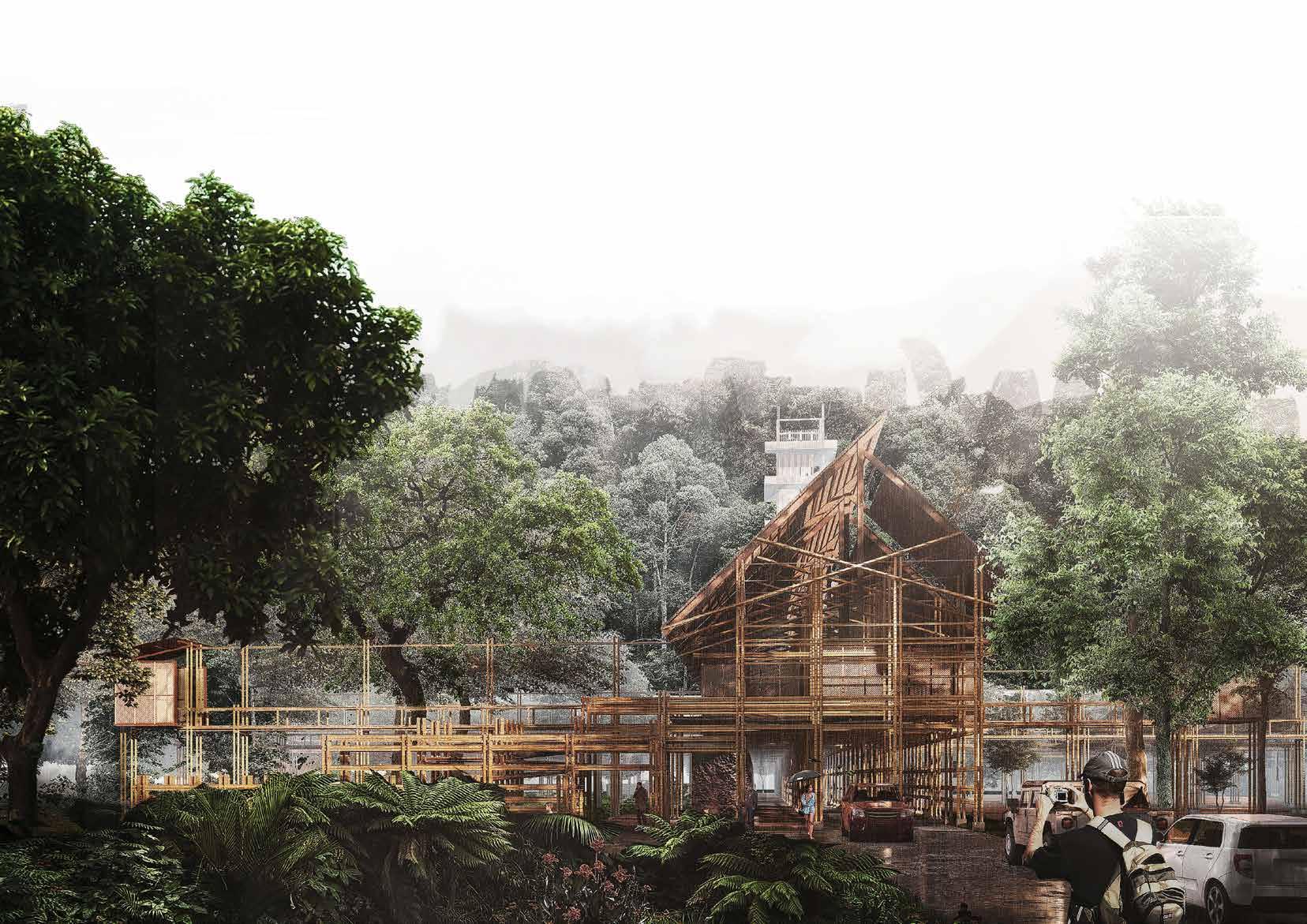
1 minute read
re + amazonia conservation center
TYPE: INTERNATIONALL CONTEST
STAKEHOLDERS: CONTEST
Advertisement
SITE:AMMAZON
ARCH. RAFAEL SUAREZ M, ARCH. BYRON CADENA, ARCH. CARLOS ARCOS
CONTRIBUTIONS:CONCEPTUAL PLANNING, RENDERING, 3D MODELLING, 2D DRAFTING, PRESENTATIONS, SCHEMES
In the Amazon there are millions of enclaves with similar characteristics. Most of these are a consequence of the terrible operations of the human being. However, the project exposes the potential of a paradigm shift. It shows that it is possible to change the development models in which we use nature, for others in which we serve nature. A way of doing things in which human action is synonymous with contributing to the environment. A future in which the architect is a key piece in repairing the world.



The balanced coexistence between human beings and nature is no longer an option, it is an urgent need. In this case, the project requirements demand the intervention of a deforested area. One more trace of anthropic intervention in the Amazon. Throughout history, nature has been devastated due to development models based on the excessive consumption of non-renewable resources; and the Amazon is testimony to this. Until the first semester of 2020, its level of deforestation grew to close to 65%. Such is the damage that experts say that 2020 will break historical records for environmental damage. Given this context and the imminent need for an architectural project, it is essential to ask: should human intervention always be synonymous with damage to nature? And, even more important, can architectural intervention be made a tool to recover the ecosystem?
The project strategies and decisions of the project take these questions as a starting point. Through the longitudinal arrangement of the archi- tectural program on the entrance road, it defines an edge that makes visible the contrast between the intervened area and nature. This linear distribution enables a seam between both sides, through the implementation of spaces with which users can explore the entire project. This distribution of the program makes it possible to dispose of the deforested property as a space for the regeneration of lost vegetation. Although the mere fact of not intervening in this space would eventually allow nature to recover, the project seeks to go further. Through the implementation of translucent surfaces, the project routes are complemented. Which allows to promote the regeneration of the ecosystem in stages in the short, medium and long term. Consequently, thanks to the application of these strategies, it is possible to restore the ecosystem and recover the enclave produced by the harmful interference of the past.






